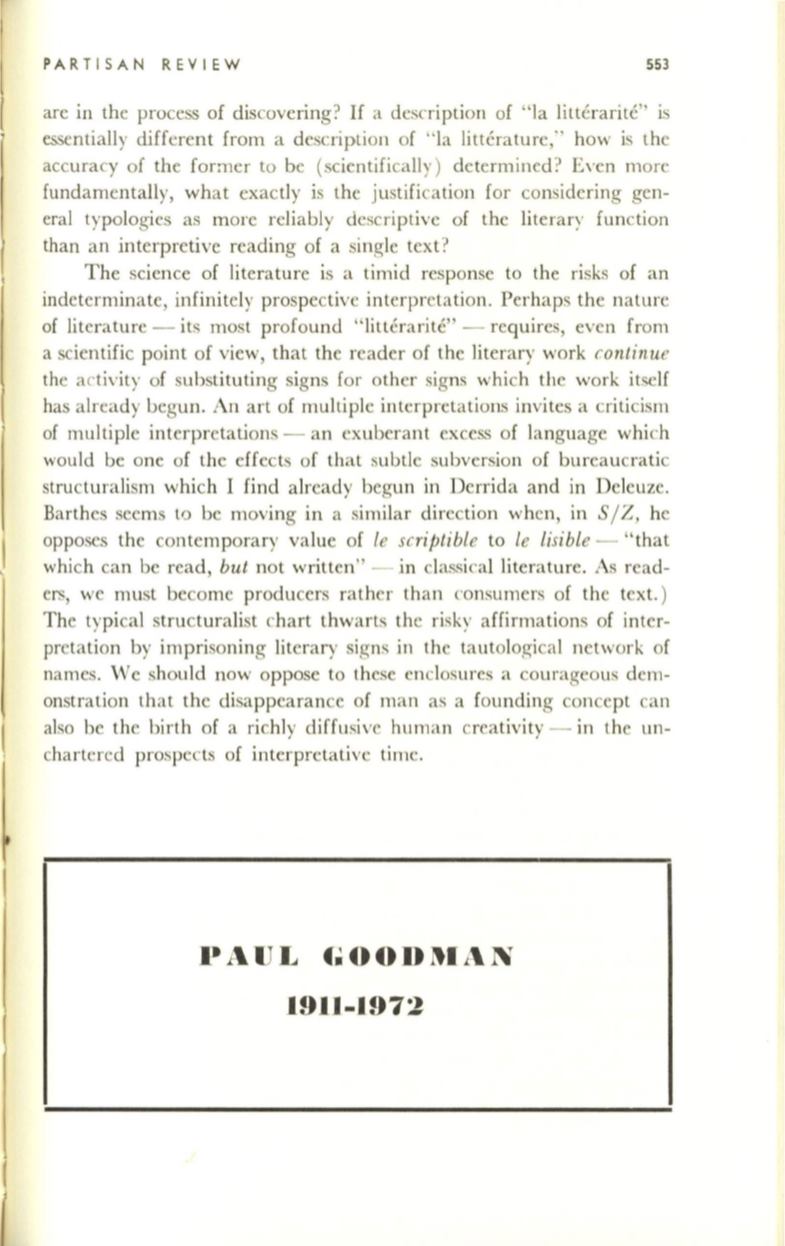
PARTISAN REVIEW
553
are in the process of discovering?
If
a description of "Ia IitteraritC" is
essentially different from a description of "Ia litterature; ' how is the
accuracy of the former to be (scientifically) determined? E"en more
fundamentally, what exactly is the justification for considering gen–
eral typologies as more reliably de criptive of the literary function
than an interpretive reading of a single text?
The science of literature is a timid response to the risks of an
indeterminate, infinitely prospective interpretation. Perhaps the nature
of literature - its most profound "litterarite" - requires, even from
a scientific point of view, that the reader of the literary work
rontinue
the activit), of substituting signs for other signs which the work itself
has already begun. An art of multiple interpretations invites a criticism
of multiple interpretations - an exuberant excess of language which
would be one of the effects of that subtle subversion of bureaucratic
structuralism which
I
find already begun in Derrida and in Deleuze.
Barthes seems to be moving in a similar direction when, in
S/Z,
he
opposes the contemporary value of
le scriptible
to
le lisible
-
"that
which can be read,
but
not written" - in classical literature. As read–
ers, we must become producers rather than consumers of the text. )
The typical structuralist chart thwarts the risky affirmations of inter–
pretation by imprisoning literary signs in the tautological network of
names. We should now oppose to these enclosures a courageous dem–
onstration that the disappearance of man as a founding concept can
also be the birth of a richly diffusive human creativity - in the un–
chartered prospects of interpretative time.
PAUL
(~OOD~IAN
1911-1972


